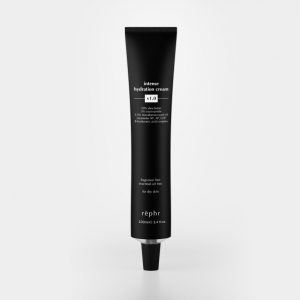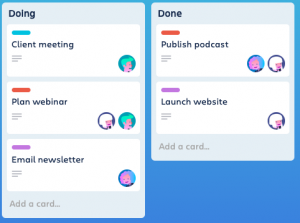2021 hit the eCommerce space with some serious challenges, including the global shipping crisis and supply chain bottlenecks. But the year also saw eCommerce retailers step up their game to provide customers with better experiences and meet rising consumer expectations.
When the global pandemic forced international lockdowns, eCommerce became the clear way forward for retail. But while businesses rapidly shifted their operations online, many were unclear on which eCommerce channels to prioritize.
Now, as we look back on 2021 eCommerce trends, e-tailers can better understand where to focus their 2022 efforts. We’ve seen an increase in mobile sales and a shift towards social commerce, among other trends, which will significantly influence 2022 eCommerce planning.
Looking back on 2021
2021 had some interesting eCommerce trends, some of which were expected, while others took us by surprise. Now that your killer holiday campaigns are done, keep them top of mind as we look at lessons learned. For most of eCommerce, the holiday season is the biggest spend and push. Think about what worked for you and then how the other trends we look at can improve and expand on your holiday successes.
If you’re going to experiment, try it early in 2022. You want to have an idea of what’s useful long before your next year-end holiday campaigns start.
Mobile sales continued to rise
Mobile commerce sales are steadily rising, hitting an all-time high in 2021:

(Source: Oberlo)
In the years before 2016, it wasn’t uncommon to find websites that weren’t mobile responsive. Many eCommerce brands were generating enough sales just by being desktop-friendly. But we’re in 2022 now, and consumers prioritize convenience even more. Mobile shopping makes it easy for consumers to place orders on-the-go, and its appeal is reflected in the numbers.
To keep up with the growing mobile eCommerce market, most e-retailers are making sure their stores and funnels are mobile-friendly. However, as mobile shopping sales increase, you might want to see how your existing mobile marketing can be improved. Are there steps your brand can take to make it even easier for mobile users to shop?
Social commerce and live shopping gained more traction
More than 200 of Instagram’s users visit a brand’s page every day, and 58% of the platform’s users become interested in products after seeing them on Instagram Stories. So, consumers aren’t only using social media to stay in touch with their friends; they’re looking to buy.
Unsurprisingly, social media giants like Facebook and its daughter brands Instagram and WhatsApp were quick to embrace social commerce. Over the years, we’ve seen Meta-owned social media platforms evolve past Instagram and Facebook Shopping to offer more creative options like WhatsApp Business and Facebook Marketplace.
More recently, FB and Instagram’s live streaming features let brands directly link to products they’re talking about. So as social commerce becomes increasingly vital, we’re expecting to see social media giants continue to ramp up their shopping features.
Consumers focused on sustainability
As consumers become increasingly aware of environmental issues, they’re holding brands to a higher standard of accountability. Statista conducted a survey to better understand which environmentally friendly brand attributes matter to consumers, and 45% of respondents were looking for environmentally responsible or sustainable brands.
Many eCommerce brands are increasing their sustainability efforts, such as by reducing their plastic usage. But, to keep up with consumer expectations, we can expect brands to become even more eco-conscious in 2022. Additionally, brands that have yet to introduce sustainability practices may follow suit.
Supply chain resiliency became paramount
The pandemic disrupted 2020 supply chain operations in unprecedented ways, and 2021 has yet to recover from the repercussions. We’re still experiencing global shipping challenges, supply shortages (which forced Apple to halt iPhone production), and inflation, among other issues.
Some sectors have been hit worse than others, and some businesses performed better than their competitors. But, in general, most eCommerce brands have faced supply chain challenges. These problems have encouraged brands to prioritize supply chain resiliency and adopt supply chain strategies that are more flexible to disruptions. Companies are struggling as research shows that customers still want expedited shipping options, but that becomes harder to promise and deliver.
Google Local Inventory Ads (LIA) usage increased
In 2021, more eCommerce brands leveraged Google LIA and LSA (service ads) to increase local sales. Google Local Inventory Ads helps increase your visibility and get in front of customers that are ‘ready to buy.’ When a customer in your vicinity enters a search time like “red shirt near me,” your ads will showcase your in-store products and store information. A big draw of using LIA ads is they display inventory currently in stock, so you can quickly convert customers that are already in the buying stage.
Shifting to POAS from ROAS ad spend strategy
While ROAS technically means ‘return’ on ad spend, many eCommerce brands calculate the ‘revenue’ instead because of the complications involved. Unfortunately, revenue forgoes key considerations concerning your profit margins, including shipping and fixed costs, making it an unreliable success indicator.
However, because of how convenient the metric is, many businesses stuck to ROAS. They’d make do with setting average or differentiated ROAS targets, or a highest break-even goal. But these strategies all come with pitfalls, resulting in inaccurate data or driving poor decision-making.
2021 was a tricky year for digital advertising – iOS updates created a massive wedge between retailers and consumers, and ad spends have shot up in many industries. And with these challenges, there comes a need to adopt more strategic spending strategies.
Hence, moving into 2022, more businesses may shift to POAS (Profit on Ad Spend) to measure performance. POAS is more reliable because it accounts for additional expenses, like your fixed costs. The KPI realistically determines your ad spends success; as long as your POAS is greater than 1, you’re profiting off ad spend.
Implementations for the future
In 2021, eCommerce brands adopted new strategies to deliver better customer experiences. As we ease into 2022, we can expect to see more implementation of:
Omnichannel is the name of the game
The retail eCommerce sector is increasingly competitive, so if your prospects can’t find you, you’ll lose them to competitors. So don’t make them hunt you down. Instead, increase your brand’s visibility and branch into platforms that host your target audience.
Relying solely on Google search isn’t enough, nor is depending on social media. Use both because consumers are interacting with brands across different channels. Moreover, according to Sprout Social’s research, nearly 85% of customers won’t make a purchase until they’ve seen a product several times. So, an omnichannel presence is critical to drive conversions.
Artificial Intelligence (AI)
Although IBM’s Watson didn’t live up to its hype, AI has brought revolutionary changes to the eCommerce sector. Artificial intelligence has helped eCommerce brands affordably step up their customer service and deliver more personalized experiences.
Product recommendations
Invesp’s survey on product recommendations revealed that 49% of customers purchased a product that they had no prior intention of buying, after receiving a personalized recommendation. Thus, given how crucial repeat purchases are, eCommerce retailers can’t afford to under-deliver when it comes to personalized experiences. That’s why many companies are adopting eCommerce merchandising practices specific to the 2022 audience.
Chatbots
Chatbots have become mainstream, with more than two-thirds of customers having used them in 2020. They provide customers with a step above ‘self-service’ support, without requiring any human intervention.
So, if you’re not already using chatbots, you might want to consider improving your 2022 customer service strategy with them. Chatbots provide 24/7 customer support without the hefty costs of hiring round-the-clock personnel. You can create complex flows to manage common support requests and integrate live chat functionality to let support agents take over when necessary.
Hyper-personalization
After being directed through Google Search, Bob lands on your eCommerce store, hunting for a smartphone. He finds one he likes and proceeds to add it to his cart. Now, your store’s AI kicks in and recommends him a hairdryer, but it’s of no interest to Bob, so he proceeds to purchase just the smartphone.
If the AI had recommended a smartphone cover or screen protector, Bob’s order value might have been higher. And that’s why hyper-personalization is critical to modern marketing.
With hyper-personalization, eCommerce brands drive repeat purchases by strategically guiding customers towards valuable purchases. You can upsell or cross-sell to increase revenue, while simultaneously providing customers with value, increasing their loyalty.
Augmented and Virtual Reality (AR/VR)
While eCommerce retail takes the cake for consumer convenience, an advantage of brick-and-mortar store’s lies in physical browsing. Consumers can look at and feel physical products before finalizing their purchase, giving them more confidence in their buying decisions.
And while augmented and virtual reality seems like a futuristic concept, many eCommerce brands picked it up during the pandemic to fill this gap. With AR/VR, consumers can ‘browse’ and view objects from multiple angles (and even digitized doors for objects like cars), inspiring more confidence in their purchase.
Wrapping up
2021 didn’t see any fundamental changes to marketing principles, because the tenants remain the same; deliver better customer experiences, help your audience find you, and optimize your supply chain operations.
As we venture into 2022, some important 2021 takeaways include:
- Meet your customers in their favorite spots. Does your target audience like to hang out on TikTok? Or perhaps they prefer to shop on Instagram? Find out which platforms your audience uses, and brainstorm creative ways to meet them. For example, if your target audience uses TikTok, negotiating a sponsorship deal with a popular creator might help you generate brand awareness.
- Don’t just personalize; hyper-personalize. Segment your audiences, and then segment your segments. One of the many advantages of big data is brands aren’t limited to basic segment categories like age or location. Now, you can find out your customers’ interests, what social causes resonate with them, their purchase patterns, and more.
- Get creative with your logistics planning. While supply chain disruptions are inevitable, retailers can control how we respond to them. Audit your fulfillment efforts and identify areas of improvement, whether that entails leveraging inventory management software, distributing your inventory, or outsourcing your logistics to a fulfillment partner.
- Step up your ads game and audit your marketing strategy. Digital advertising has faced many challenges these years, but it’s still critical to your eCommerce strategy. You might need to reevaluate how you monitor ad spend performance, or increase your local advertising efforts, but ads aren’t going anywhere.
So, with these important considerations in mind, what will your 2022 eCommerce marketing strategy look like?
Digital & Social Articles on Business 2 Community
(47)









